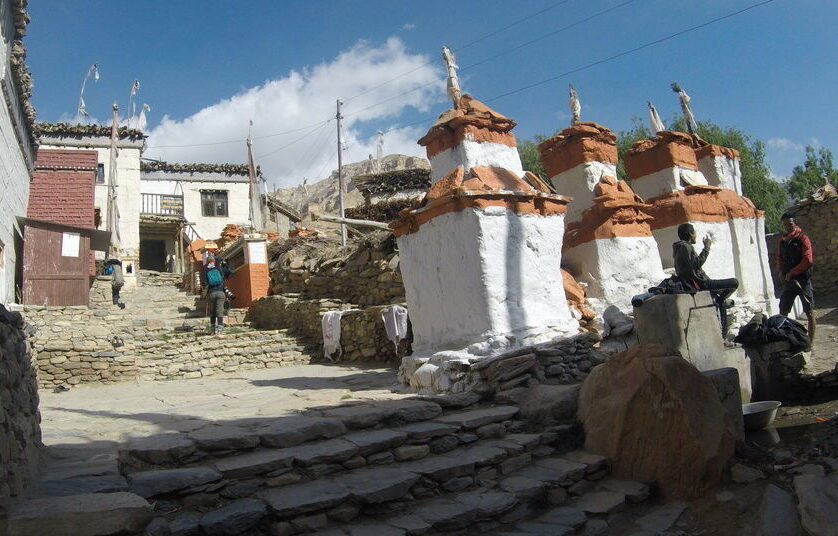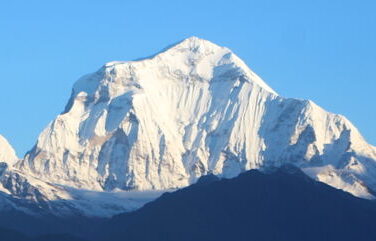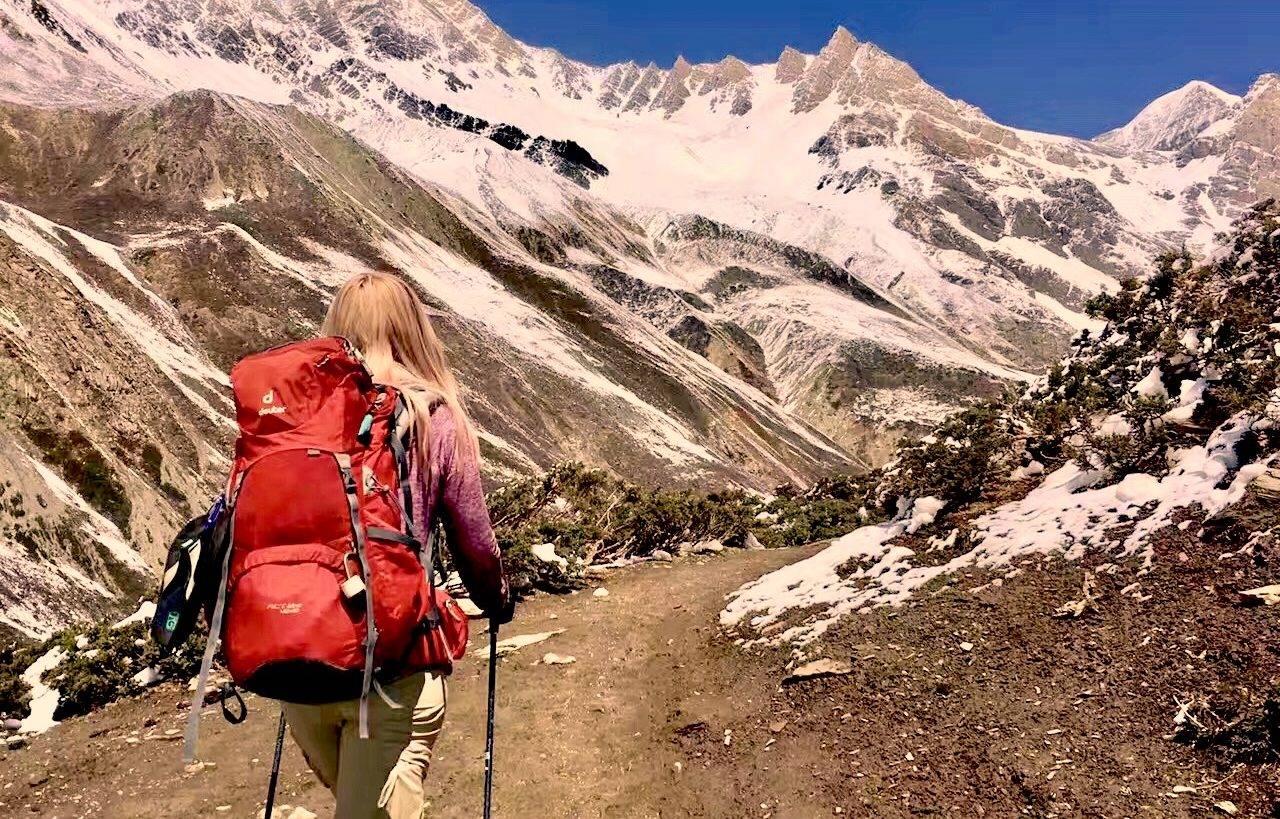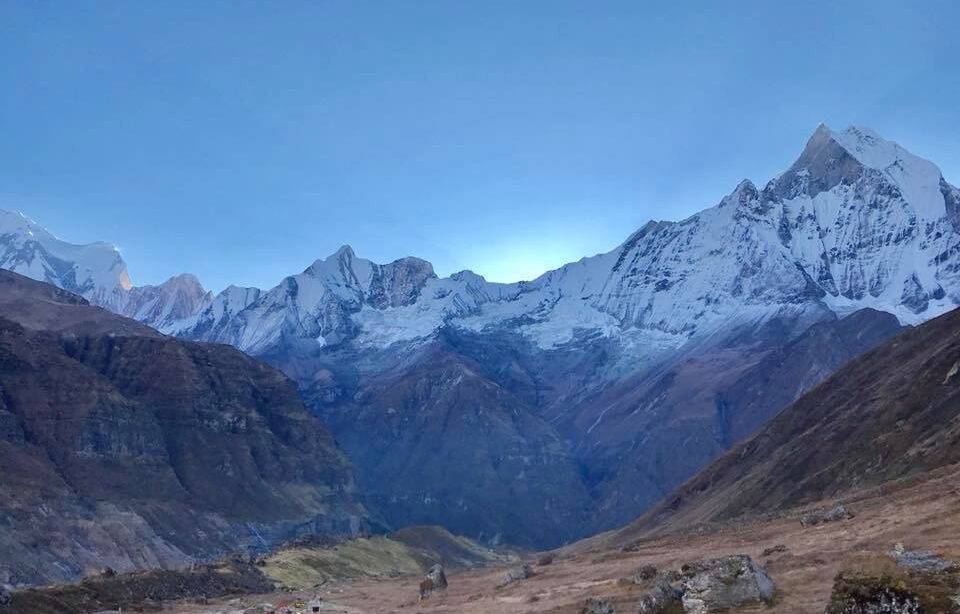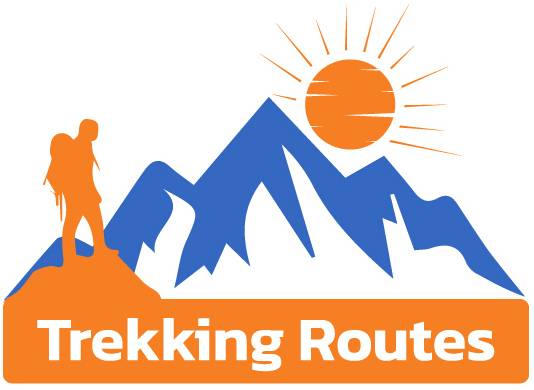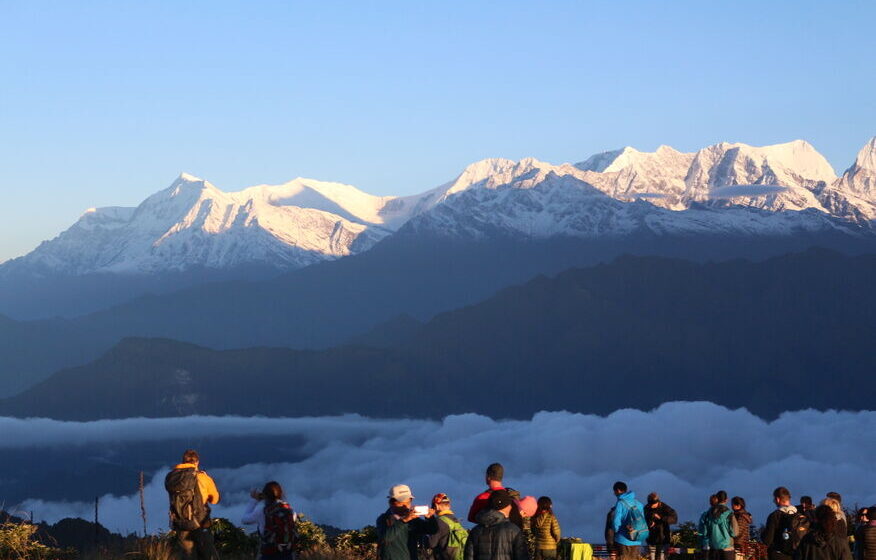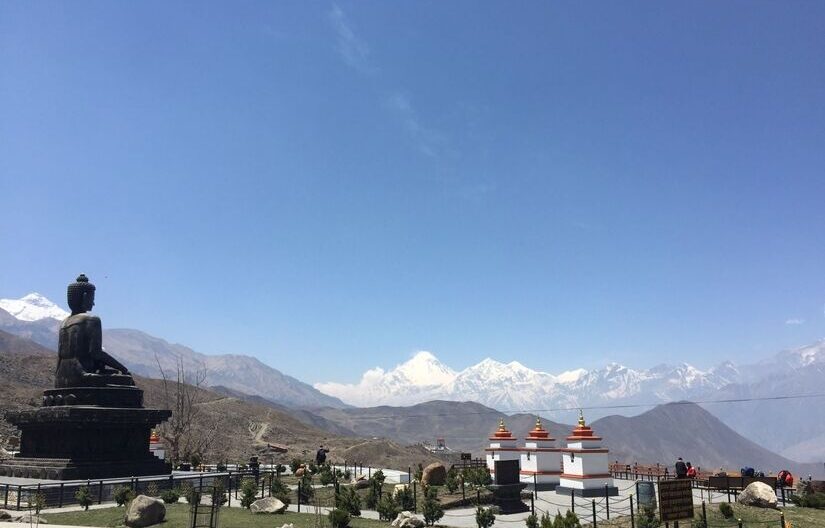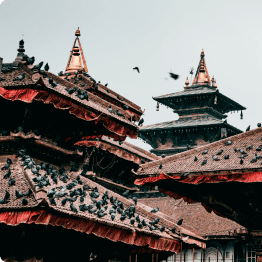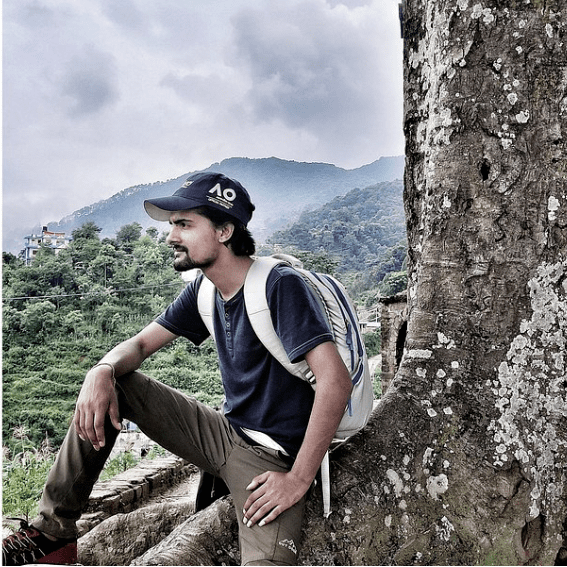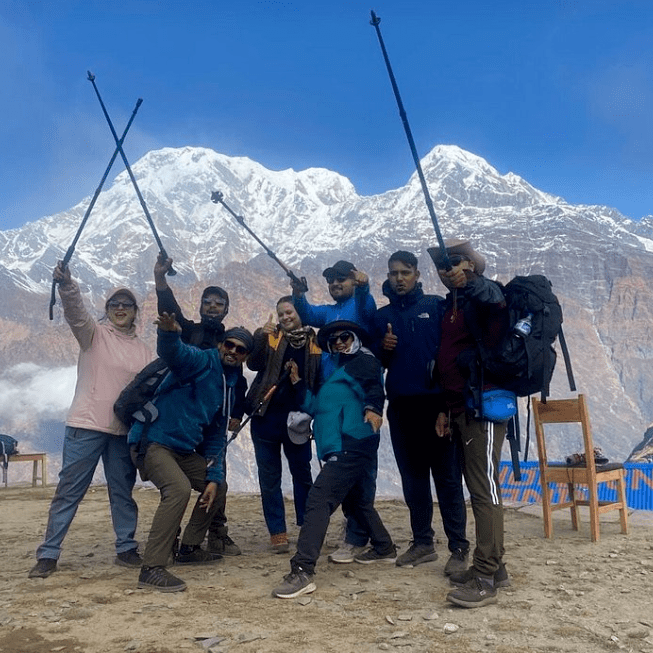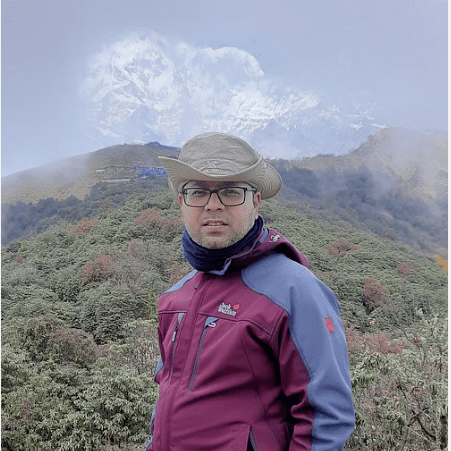Nestled in the heart of the Annapurna region of Nepal, the Mardi Himal Trek is a pristine and less-travelled route. It offers a remarkable blend of natural beauty, cultural exploration, and serene mountain vistas. Spanning 8 days, this trek allows adventurers to embark on a journey of discovery through enchanting landscapes and traditional villages.
Pokhara, a city known for its tranquil lakes and breathtaking mountain views, starts the Mardi Himal Trek with a scenic drive to Kande, the starting point of the trek. From there, trekkers embark on a mesmerizing journey through lush rhododendron forests, terraced fields, and charming Gurung settlements. As the trail gradually ascends, trekkers are greeted with panoramic views of the surrounding mountains. It includes the iconic Machapuchare (Fishtail) and Annapurna South. The trek offers ample opportunities for cultural immersion, with encounters with local villagers along the way, providing insight into the unique way of life of the Gurung and Magar communities. One of the highlights of the Mardi Himal Trek is reaching High Camp, a tranquil retreat situated amidst alpine meadows and towering peaks. From here, trekkers can marvel at the awe-inspiring vistas of Mardi Himal and its neighbouring peaks, soaking in the serenity of the Himalayan landscape. The journey culminates with a trek to Mardi Himal Base Camp, situated at an altitude of 4,500 meters, offering unparalleled views of the Annapurna Sanctuary and surrounding peaks. The sense of achievement upon reaching the base camp, coupled with the breathtaking beauty of the Himalayas, makes for an unforgettable experience.
Throughout the trek, trekkers are accompanied by experienced guides who provide valuable insights into the local culture, history, and geography of the region. The warm hospitality of the villagers and the camaraderie among fellow trekkers create a sense of community and shared adventure along the trail.
As trekkers descend back to Pokhara, they carry memories of the stunning landscapes, cultural encounters, and personal achievements they experienced during the Mardi Himal Trekking. Whether you’re a seasoned trekker or a first-time adventurer, this trek offers an opportunity to escape the ordinary and immerse yourself in the beauty of the Himalayas.
Join us on the Mardi Himal Trek and embark on a journey of discovery, exploration, and inspiration amidst the awe-inspiring landscapes of the Annapurna region.
Mardi Himal Trek in Summer
In the summer months, the Mardi region transforms into a paradise for trekkers, offering a unique and captivating experience amidst the lush greenery and vibrant landscapes. As the sun rises high in the clear blue skies, the Mardi region comes alive with the symphony of nature, inviting trekkers to embark on a journey of exploration and discovery. The verdant hillsides are adorned with a tapestry of colourful wildflowers, painting the landscape with hues of pink, purple, and yellow. The air is filled with the sweet scent of blooming rhododendrons, creating an enchanting atmosphere that is both refreshing and invigorating.
Trekking through the Mardi region in summer, trekkers are treated to breathtaking views of majestic snow-capped peaks towering above emerald green valleys. The mighty Annapurna massif dominates the horizon, its jagged peaks reaching towards the heavens in a display of awe-inspiring grandeur. Trekkers are surrounded by a panorama of natural beauty at every turn, with cascading waterfalls tumbling down rocky cliffs and pristine mountain streams meandering through lush meadows.
One of the highlights of trekking in the Mardi region during the summer months is the opportunity to witness the diverse wildlife that calls this region home. From playful monkeys swinging through the treetops to elusive Himalayan birds flitting among the branches, the Mardi region is a haven for nature lovers and wildlife enthusiasts. Trekkers may even be lucky enough to glimpse the elusive snow leopard or Himalayan black bear, adding an element of excitement to their trekking adventure.
The summer months also offer trekkers the chance to immerse themselves in the rich cultural heritage of the Mardi region as they encounter friendly locals going about their daily lives. From traditional hillside villages to ancient Buddhist monasteries, the Mardi region is steeped in history and tradition, providing trekkers with a glimpse into a way of life unchanged by time. Trekkers are welcomed with warm smiles and open hearts as they share meals with local families and participate in traditional ceremonies and festivals.
As the day ends, trekkers are treated to spectacular sunsets over the Himalayan peaks. Casting a golden glow across the landscape and painting the sky with orange, pink, and purple hues. As night falls, the stars come out to play, twinkling overhead in a dazzling display of celestial beauty. In the summer, the Mardi region truly comes alive, offering trekkers an unforgettable journey through one of Nepal’s most picturesque and enchanting landscapes.
Mardi Himal Trek in Winter
Mardi in Winter transforms into a serene winter wonderland, offering a unique and enchanting trekking experience amidst the snow-capped peaks of the Annapurna region in Nepal. As the cold season sets in, the landscape transforms, with snow blanketing the rugged terrain and glistening under the clear blue skies. Trekking through the Mardi region in winter presents trekkers with breathtaking vistas of majestic mountains, including the iconic Machapuchare (Fishtail) and the Annapurna range, adorned with a pristine white coat of snow. The crisp mountain air is refreshing, and the silence of the winter wilderness creates a sense of tranquillity and peace that envelops trekkers in a serene embrace.
The Mardi trekking route in winter offers trekkers a sense of solitude and isolation, with fewer tourists braving the chilly temperatures. This allows for a more intimate and immersive experience as trekkers traverse through untouched snow-covered landscapes, far away from the hustle and bustle of city life. The trail winds through dense rhododendron forests, their branches laden with snow, which creates a winter wonderland straight out of a fairy tale. Trekking through these enchanting forests may encounter traces of wildlife, such as deer and Himalayan birds, adding to the sense of adventure and exploration.
One of the highlights of the Mardi Himal trek in Winter is reaching the high vantage points along the trekking route. These offer panoramic views of the surrounding mountains bathed in soft morning light or glowing in the golden hues of sunset. Trekkers can witness the mesmerizing play of light and shadow on the snow-covered peaks, creating a spectacle of natural beauty that is truly awe-inspiring. Camping amidst the snowy wilderness under the starry night sky is a surreal experience, with the snow-capped mountains looming overhead and the crisp mountain air tingling with the promise of adventure.
Despite the challenges of the winter weather, trekking in Mardi during this season is a rewarding and unforgettable experience for those seeking solitude, serenity, and stunning mountain vistas. With proper preparation and the guidance of experienced local guides, trekkers can safely navigate the snow-covered trails and immerse themselves in the pristine beauty of the Annapurna region in all its winter glory. Mardi in Winter is not just a trekking journey; it’s a magical winter adventure that captures the heart and soul of every traveller who dares to explore its snowy trails.
A Day in a life in the Mardi Region
A day in the Mardi region unfolds with the gentle caress of dawn as the first rays of sunlight illuminate the rugged landscape. As the sleepy villages begin to stir, the aroma of freshly brewed tea and the melodious chirping of birds fill the air, signalling the start of another day in this tranquil mountainous haven. Against majestic peaks, villagers emerge from their traditional stone houses, adorned with colourful prayer flags fluttering in the breeze, to begin their daily rituals.
The day begins with a hearty breakfast of traditional Nepali fare, including steaming bowls of dal bhat fresh vegetables and homemade pickles. Fuelled by this nutritious meal, locals set about their daily tasks, tending to fields of golden barley and verdant terraced rice paddies that cascade down the mountainsides. The rhythmic sound of ploughs slicing through the rich earth fills the valley, a timeless reminder of the agricultural traditions that have sustained these communities for generations.
As the sun climbs higher in the sky, casting dappled shadows across the landscape, villagers gather at the local temple to offer prayers and seek blessings for the day ahead. The air resonates with the sound of chanting and the tinkling of bells as devotees perform their rituals with reverence and devotion. Against snow-capped peaks and verdant forests, this sacred space serves as a spiritual sanctuary, offering solace and tranquillity to all who seek it. With their prayers offered and blessings received, villagers turn their attention to the tasks at hand, whether it be tending to livestock, gathering firewood, or tending to the needs of their families. Women clad in colourful traditional attire traverse the narrow paths, balancing baskets of fodder and bundles of firewood with effortless grace. At the same time, children scamper playfully through the fields, their laughter echoing in the crisp mountain air. The tranquillity of the Mardi region is interrupted only by the rare sound of cowbells. The distant hum of mule trains making their way along ancient trade routes as the day progresses. Villagers pause to exchange greetings and share news, forging bonds of community and camaraderie that have endured for centuries. In the shade of ancient oak trees, elders gather to share stories and wisdom passed down through generations, preserving the rich cultural heritage of the region for future generations to cherish.
As evening falls and the last light fades from the sky, villagers return to their homes, weary but content after a day of honest toil and simple pleasures. Around crackling fires, families gather to share meals and stories, their faces illuminated by the warm glow of flickering flames. As the stars twinkle overhead and the night unfolds its velvet cloak, the Mardi region settles into a peaceful slumber, ready to greet the dawn of another day in this timeless mountain paradise.
- Serene Rhododendron Forests: As you traverse the Mardi Himal Trek, immerse yourself in the tranquillity of enchanting rhododendron forests. These dense woodlands come alive with vibrant blooms in many hues, ranging from fiery reds and oranges to soft pinks and whites. Each step through these forests is a sensory delight, with the delicate fragrance of blossoms filling the air and colourful petals carpeting the forest floor, creating a picturesque scene straight out of a fairytale.
- Stunning Mountain Vistas: The attractive views of the Annapurna mountain range are destined to captivate you as they unfold before you throughout the Mardi Himal Trek. Towering peaks, including the iconic Machapuchare (Fishtail) and the majestic Mardi Himal, dominate the horizon, their snow-capped summits piercing the cerulean sky. With every turn along the trail, panoramic views that showcase the raw beauty and grandeur of the Himalayas will be witnessed, and an indelible imprint will be left on one’s soul
- Mardi Himal Base Camp: The pinnacle of the Mardi Himal Trek awaits at the breathtaking Mardi Himal Base Camp, perched at an elevation of 4,500 meters. Here, amidst the rugged wilderness of the Annapurna Sanctuary, you’ll stand in awe of the towering peaks surrounding you. From this vantage point, the sheer magnitude of the Himalayan landscape unfolds before your eyes, offering a glimpse into the awe-inspiring power of nature and a moment of pure serenity amidst the towering giants of the Himalayas.
- Off-the-Beaten-Path Experience: Embark on a journey of discovery along a lesser-known Trekking Routes that leads you away from the hustle and bustle of crowded trails. The Mardi Himal Trekking offers a rare opportunity to escape the crowds and immerse oneself in the solitude of pristine natural surroundings. Here, amidst the untouched beauty of the Himalayan wilderness, you’ll find solace in the stillness of the mountains and the serenity of the untouched landscape, forging a deep connection with nature that is both rejuvenating and inspiring.
- Birdwatching Opportunities: Nature enthusiasts and birdwatchers will delight in the abundance of avian life that thrives along the Mardi Himal Trek. Keep your binoculars handy as you spot a colourful array of Himalayan bird species flitting among the branches, including vibrant pheasants, majestic eagles, and graceful Himalayan griffons soaring above. Each sighting offers a glimpse into the region’s rich biodiversity and provides a rare opportunity to observe these magnificent creatures in their natural habitat.
- Authentic Nepali Cuisine: Indulge your taste buds in the flavours of Nepal as you sample authentic Nepali cuisine at cosy tea houses dotted along the trekking route. From hearty bowls of dal bhat, the quintessential Nepali staple of rice and lentils, to steaming plates of momos, delicious dumplings filled with savoury fillings, and piping hot bowls of thukpa, fragrant noodle soup, each meal is a culinary adventure that tantalizes the senses and provides a taste of traditional Himalayan flavours.
